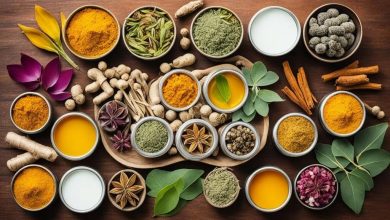Esophageal Achalasia Diet: 10 Life-Changing Foods That Make Swallowing Easier

Living with achalasia can be frustrating, especially when swallowing becomes difficult or even painful. When the oesophagus struggles to move food into the stomach, mealtimes may feel like a daily challenge. But with the right food choices, you can regain control, nourish your body, and enjoy meals again. The Esophageal Achalasia Diet focuses on foods that are easier to swallow, digest, and absorb while helping reduce discomfort.
What is Esophageal Achalasia?
Esophageal achalasia is a rare, long-term disorder that affects the way your oesophagus (food pipe) works. The oesophagus is the muscular tube that carries food and liquids from your mouth to your stomach. In people with achalasia, this system does not function properly. As a result, swallowing becomes difficult and uncomfortable, often leading to weight loss, chest discomfort, and regurgitation of undigested food.
Understanding achalasia can help you or a loved one manage the condition more confidently. This article explains what achalasia is, why it happens, how it is diagnosed, and what treatment options are available.
How the Oesophagus Normally Works
Before diving into achalasia, it helps to understand how the oesophagus works in a healthy person. The oesophagus is made of muscles that contract in a coordinated way to push food down towards the stomach. This wave-like motion is known as peristalsis.
At the lower end of the oesophagus is a ring of muscle called the lower oesophageal sphincter (LES). This muscle opens to let food pass into the stomach and then closes to stop stomach acid from flowing back up. In achalasia, this system breaks down.
What Happens in Achalasia?
In people with esophageal achalasia:
- The muscles of the oesophagus do not contract properly, so food doesn’t move down easily.
- The LES fails to relax when swallowing, which prevents food and liquid from entering the stomach.
As a result, food and drink can get stuck in the oesophagus, causing discomfort and a range of symptoms.
What Causes Esophageal Achalasia?
The exact cause of achalasia isn’t fully understood. However, it is believed to involve the gradual loss of nerve cells in the wall of the oesophagus. These nerves are essential for controlling the muscle contractions and sphincter relaxation needed for swallowing.
Several factors may play a role:
- Autoimmune reactions – where the body mistakenly attacks its own nerve tissue.
- Viral infections – possibly triggering the immune response.
- Genetics – in rare cases, achalasia may run in families.
- Secondary causes – such as Chagas disease (common in South America), or rare tumours compressing nerves.
In most people, though, it occurs without any obvious reason. This is called primary achalasia.
Common Symptoms
Esophageal achalasia develops gradually, often over months or years. Symptoms may be mild at first but tend to worsen over time.
The most common symptoms include:
- Difficulty swallowing (dysphagia) – especially with solid foods and later with liquids.
- Regurgitation – food or liquid coming back up into the mouth, often undigested.
- Chest pain or discomfort – usually behind the breastbone.
- Heartburn-like symptoms – though not caused by acid reflux.
- Weight loss – due to eating less or difficulty keeping food down.
- Coughing or choking – particularly at night when lying flat.
Some people also experience bad breath due to stagnant food in the oesophagus.
How is Achalasia Diagnosed?
If a doctor suspects achalasia based on your symptoms, they will recommend tests to confirm the diagnosis. These may include:
1. Barium Swallow Test
You drink a chalky liquid that shows up on X-rays. In achalasia, the oesophagus often appears enlarged with a narrowed lower end, sometimes called a “bird’s beak” appearance.
2. Oesophageal Manometry
This is the key test for diagnosing achalasia. A thin tube is passed into the oesophagus to measure muscle activity and how well the LES relaxes when swallowing.
3. Endoscopy
A flexible tube with a camera is inserted through the mouth to examine the inside of the oesophagus and stomach. This helps rule out cancer or other conditions with similar symptoms.
Is Achalasia Dangerous?
Achalasia is not life-threatening in itself, but it can lead to serious complications if left untreated:
- Severe weight loss and malnutrition.
- Aspiration pneumonia – caused by inhaling regurgitated food into the lungs.
- Oesophageal dilation – the oesophagus becomes stretched and less effective over time.
- Increased risk of oesophageal cancer – especially in long-standing cases.
That’s why early diagnosis and treatment are important.
Related Article: How I Cured My Achalasia With Herbal Remedies And Natural Treatment
Why Diet Matters in Esophageal Achalasia
For individuals with Esophageal Achalasia, managing what and how they eat is a daily challenge. The inability of the LES to relax means that food can get stuck in the esophagus, causing discomfort and even pain. In severe cases, undigested food can ferment, leading to inflammation and secondary infections. This makes diet not only a source of nourishment but also a therapeutic tool.
1. Preventing Malnutrition and Weight Loss
One of the biggest concerns for patients with Esophageal Achalasia is involuntary weight loss due to difficulty eating. Because food passes slowly—or not at all into the stomach, many patients feel full quickly or avoid eating altogether out of discomfort. A carefully planned diet rich in calories, protein, and essential nutrients is critical to prevent malnutrition.
Nutrient-dense liquids such as smoothies, broths, and meal replacement shakes can help meet caloric needs. Soft, pureed, or well-cooked foods are easier to swallow and less likely to get lodged in the esophagus. Patients are often encouraged to eat smaller, more frequent meals to ease the digestive burden.
2. Reducing the Risk of Aspiration
Aspiration, where food or liquid enters the airway, is a significant risk in Esophageal Achalasia. When food backs up in the esophagus, it can be regurgitated and accidentally inhaled, leading to aspiration pneumonia. Certain dietary practices—such as eating slowly, chewing food thoroughly, and avoiding eating before bed—can reduce this risk. Additionally, a semi-liquid or soft-food diet is generally easier to manage and less likely to cause choking or aspiration events.
3. Avoiding Trigger Foods
Some foods are more difficult to swallow or may exacerbate symptoms. Individuals with Esophageal Achalasia often find that dry, fibrous, or sticky foods like bread, rice, or meat are particularly problematic. Spicy or acidic foods may irritate the esophagus, especially if inflammation is present. In such cases, individualized elimination diets or working with a dietitian can help patients identify and avoid specific triggers.
4. Supporting Treatment Outcomes
Diet is also critical in supporting the effectiveness of medical or surgical Treatment for Esophageal Achalasia. Interventions such as pneumatic dilation, Heller myotomy, or peroral endoscopic myotomy (POEM) aim to open the LES and facilitate the passage of food. Post-procedure, a graduated diet—starting with clear liquids and progressing to solids—is typically prescribed. Adherence to dietary guidelines during recovery can significantly improve outcomes and prevent complications.
Moreover, a lifelong dietary strategy often remains necessary even after surgical intervention, as symptoms can recur or persist in some cases. Patients must continue to monitor their eating habits and make adjustments as needed.
Related Article: Difficult To Swallowing Food: Strategies For Improving Eating Ability
10 Life Changing Foods that Make Swallowing Easier
Swallowing should be second nature, yet for many people, it becomes a daily challenge. Whether you’re living with esophageal disorders like achalasia, recovering from surgery, or managing age-related changes in swallowing, your diet plays a crucial role in comfort and nutrition. The right foods can ease symptoms, prevent choking, and make eating a pleasant experience again.
Let’s dive into 10 foods that check these boxes and may transform how you approach mealtimes.
1. Cooked Oatmeal
Warm, cooked oatmeal is a staple in many soft food diets and for good reason. It’s easy to swallow, filling, and gentle on the oesophagus. Adding extra water or a plant-based milk can improve its texture further, reducing the risk of food getting “stuck.”
Benefits:
- High in soluble fibre
- Supports digestion
- Easily modified to suit texture needs
Tip: Add mashed banana or a spoonful of peanut butter for extra calories if you’re trying to maintain weight.
2. Ripe Bananas
Bananas are often tolerated well in an Esophageal Achalasia Diet. They are naturally soft, non-acidic, and require minimal chewing. Their creamy texture makes them easy to mash or blend into smoothies.
Benefits:
- Gentle on the stomach
- Source of potassium and energy
- Naturally sweet and satisfying
Tip: Avoid underripe bananas, which can be tougher and harder to swallow.
3. Smooth Nut Butters (Peanut, Almond, or Cashew)
Nut butters are calorie-dense and protein-rich, making them ideal for those struggling to maintain weight. Choose smooth varieties without chunks, and mix them with liquids or spread thinly on soft bread or mashed fruit.
Benefits:
- High in healthy fats
- Easy to blend into other foods
- Supports energy levels
Tip: Combine with warm oat porridge or yoghurt to improve consistency.
4. Blended Vegetable Soups
Warm, blended soups are central to an effective Esophageal Achalasia Diet. They hydrate, nourish, and soothe the oesophagus. Carrot, pumpkin, butternut squash, and sweet potato soups are especially easy to digest.
Benefits:
- Customisable to include different nutrients
- Easier to swallow when smooth
- Ideal for meal replacements when chewing is difficult
Tip: Avoid spicy or acidic tomato-based soups if reflux is an issue.
5. Avocados
Creamy and rich in monounsaturated fats, avocados are perfect for soft food diets. Their smooth texture and high calorie content make them a lifesaver for anyone struggling with unintended weight loss.
Benefits:
- Anti-inflammatory properties
- Easy to mash or blend
- Rich in nutrients and healthy fats
Tip: Mash with olive oil and a pinch of salt for a soothing, nutritious side dish.
Related Article: Feeling Of Stomach Being Empty Exploring The Benefits Of Wellness
6. Scrambled Eggs
Soft scrambled eggs are one of the best protein options for people following an Esophageal Achalasia Diet. They’re gentle, moist, and don’t require much chewing plus, they’re packed with nutrition.
Benefits:
- High in protein and healthy fats
- Easily digestible
- Can be modified with added moisture (milk, cheese)
Tip: Avoid frying or overcooking. Keep the texture fluffy and soft.
7. Mashed Potatoes (with Olive Oil or Butter)
A classic comfort food, mashed potatoes are easy to prepare and swallow. Use olive oil or butter to enhance the softness and increase the calorie content.
Benefits:
- Provides slow-digesting carbohydrates
- Comforting and satisfying
- Versatile add vegetables like carrot or pumpkin for variety
Tip: For added nutrition, blend in soft-cooked spinach or peas.
8. Protein Smoothies
Liquid meals are often necessary during flare-ups or when solid food becomes too difficult. Protein smoothies made with bananas, yoghurt, almond milk, and nut butter offer balanced nutrition in an easy-to-consume form.
Benefits:
- Fast and efficient source of energy
- Customisable to meet individual needs
- Keeps you hydrated while delivering calories
Tip: Add oats or flaxseed for fibre if tolerated.
9. Stewed Fruits
Soft, stewed fruits like apples, pears, and peaches lose their tough fibres and skins during cooking, making them easier to swallow. They also provide natural sweetness and essential vitamins.
Benefits:
- Mild on the digestive system
- Hydrating and full of antioxidants
- Soothing when served warm
Tip: Blend into a purée if necessary for smoother texture.
10. Full-Fat Greek Yoghurt
Thick and creamy yoghurt is a gut-friendly, protein-rich food that fits well into the Esophageal Achalasia Diet. It’s easier to swallow than solid dairy and doesn’t irritate the oesophagus like acidic or spicy foods.
Benefits:
- Contains probiotics that aid digestion
- Supports muscle maintenance
- Smooth texture is ideal for swallowing
Tip: Choose plain, unsweetened varieties and mix with blended fruits or oats for added variety.
Hydration and Temperature: Two Overlooked Essentials
In addition to these 10 foods, staying hydrated is vital. Dehydration can worsen swallowing difficulties. Sip warm water between bites, and consider herbal teas that relax the oesophageal muscles.
Temperature also matters many with achalasia tolerate lukewarm or warm foods better than cold ones. Warm liquids can help relax the LES, making swallowing smoother and more comfortable.
Related Article: Cancer Of The Esophagus Or Upper Stomach Join The Fight Against
Meal Tips for Daily Comfort
Alongside food choices, how you eat can make a big difference. Try these tips:
- Eat small, frequent meals
- Sit upright for at least 30 minutes after eating
- Chew thoroughly even soft foods
- Avoid lying down immediately after meals
- Keep a food and symptom diary to identify personal triggers
These habits, along with your tailored Esophageal Achalasia Diet, can help reduce discomfort and improve your confidence at the table.
When to Consider Nutritional Support
If swallowing becomes too difficult and weight loss continues despite diet changes, consult a doctor or dietitian. They may recommend:
- Nutritional shakes
- Fortified soups
- Enzyme supplements
- Tube feeding in rare, advanced cases
Early nutritional support can prevent malnutrition and protect overall health.
Foods to Avoid on an Esophageal Achalasia Diet
While many foods can support comfort and nutrition in people with achalasia, some can make symptoms worse or increase the risk of complications like choking, regurgitation, or oesophageal irritation. Knowing what to avoid is just as important as knowing what to include. Everyone’s tolerance level can vary, but there are several food and drink categories that commonly cause problems for people managing achalasia.You may need to avoid:
- Dry, crumbly foods (crackers, dry bread)
- Tough meats or chewy protein sources
- Raw, fibrous vegetables
- Carbonated drinks
- Acidic foods (citrus fruits, tomatoes)
- Spicy or very hot foods
- Alcohol and caffeine (in some people)
These can increase the risk of regurgitation, choking, or oesophageal irritation.
Final Thoughts
Living with achalasia is not easy, but dietary choices can empower you to take back control. These 10 life-changing foods are more than just easy to swallow they can help nourish your body, support your energy levels, and reduce daily discomfort.
The Esophageal Achalasia Diet isn’t one-size-fits-all. You may need to adapt it based on your personal symptoms, stage of the condition, or medical treatments. But by focusing on soft, nutrient-rich, and easily digestible foods, you can reclaim a healthier and more enjoyable relationship with food.
Related Article: Achalasia: Read The Overall Information About The Neurological Disorder




